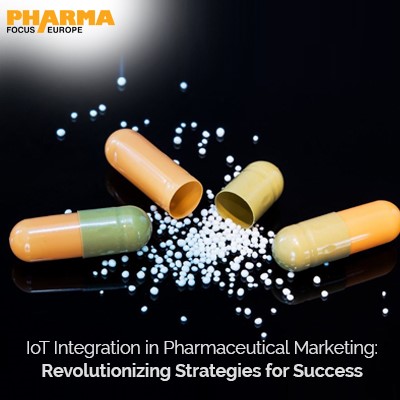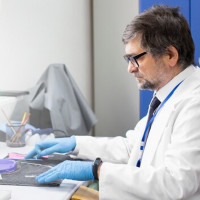IoT Integration in Pharmaceutical Marketing: Revolutionizing Strategies for Success

Strong 8k brings an ultra-HD IPTV experience to your living room and your pocket.
"IoT Integration in Pharmaceutical Marketing: Revolutionizing Strategies for Success" explores the impact of IoT technology on pharmaceutical marketing strategies. It discusses benefits like real-time data collection, personalized communication, supply chain optimization, patient adherence tracking, and industry trends, with case studies and resources for marketers.
Understanding IoT integration in pharmaceutical marketing
The integration of Internet of Things (IoT) technology in pharmaceutical marketing is transforming the way companies strategize for success. IoT enables pharmaceutical companies to collect and analyze vast amounts of real-time data, allowing for more precise targeting and personalized communication with healthcare professionals and patients.
With the incorporation of IoT sensors into drug packaging, pharmaceutical companies can monitor factors such as temperature, humidity, and location throughout the entire supply chain. This not only ensures the quality and efficacy of the drugs but also helps combat counterfeiting. Additionally, IoT devices can track patient adherence to medication and provide valuable insights into treatment outcomes.
The integration of IoT in pharmaceutical marketing opens up new opportunities for marketers. Access to a wealth of data allows them to tailor messaging and promotional campaigns to specific healthcare providers and patient segments, optimizing marketing efforts and improving overall efficiency. Moreover, it enables more targeted patient education and engagement, leading to better treatment outcomes.
The benefits of incorporating IoT in pharmaceutical marketing
The benefits of incorporating IoT in pharmaceutical marketing are numerous and far-reaching. By leveraging IoT technology, pharmaceutical companies can gain valuable insights into their products' supply chain, ensuring the quality, safety, and efficacy of medications. IoT sensors embedded in drug packaging can monitor various environmental factors, such as temperature and humidity, in real time, ensuring optimal conditions for storage and transportation. This not only helps maintain the integrity of the drugs but also minimizes the risk of compromised efficacy.
Furthermore, IoT devices enable pharmaceutical marketers to track patient adherence to medication. By collecting data on when and how patients are taking their medications, marketers can identify patterns and personalize communication to improve adherence rates. This not only benefits patients by ensuring they receive the full therapeutic benefits of their medication but also contributes to improved treatment outcomes and reduced healthcare costs.
In addition to these benefits, IoT integration in pharmaceutical marketing allows for more targeted and personalized communication with healthcare professionals. By analyzing data from IoT devices, marketers can better understand the prescribing habits and preferences of healthcare professionals, allowing for the development of tailored messaging and promotional campaigns. This targeted approach not only increases the effectiveness of marketing efforts but also strengthens relationships between pharmaceutical companies and healthcare providers.
Current trends and statistics in IoT integration in the pharmaceutical industry
The integration of IoT in the pharmaceutical industry is rapidly gaining momentum, with several notable trends and statistics highlighting its impact. According to a report by Grand View Research, the global IoT in the healthcare market is expected to reach USD 534.3 billion by 2025, driven by factors such as increasing demand for remote patient monitoring and the need for efficient healthcare delivery systems. This highlights the growing recognition of IoT as a transformative technology in the healthcare sector.
Within the pharmaceutical industry specifically, a survey conducted by Deloitte found that 70% of pharmaceutical companies have already implemented or plan to implement IoT devices and technologies. This demonstrates the industry's recognition of the potential benefits and value of IoT integration in marketing and overall business operations.
One of the key trends in IoT integration in the pharmaceutical industry is the use of smart packaging. IoT sensors embedded in drug packaging can provide real-time information on factors such as temperature, humidity, and location. This enables pharmaceutical companies to ensure the quality and safety of their products throughout the supply chain, from manufacturing to distribution. Additionally, smart packaging can help combat counterfeiting by providing authentication and anti-tampering features.
Another trend is the use of wearable IoT devices for patient monitoring and adherence tracking. These devices, such as smartwatches and fitness trackers, can collect data on various health parameters, including medication adherence. Pharmaceutical companies can leverage this data to gain insights into patient behavior and develop targeted interventions to improve adherence rates.
Developing a successful IoT integration strategy in pharmaceutical marketing
To develop a successful IoT integration strategy in pharmaceutical marketing, companies need to consider several key factors. First and foremost, it is crucial to identify the specific objectives and goals of the IoT integration. Whether it is improving supply chain efficiency, enhancing patient adherence, or optimizing marketing efforts, a clear understanding of the desired outcomes is essential.
Once the objectives are defined, it is important to assess the existing infrastructure and capabilities within the organization. This includes evaluating the availability of IoT devices and technologies, as well as the data analytics capabilities required to derive meaningful insights from the collected data. If necessary, investments in technology and talent may be required to ensure a successful integration.
Collaboration between different departments within the organization is also crucial for a successful IoT integration strategy. Close coordination between marketing, supply chain, and IT teams can help identify synergies and ensure alignment of objectives. Additionally, involving healthcare professionals and patients in the planning and implementation process can provide valuable insights and ensure that the integration meets their needs.
Lastly, companies should continuously monitor and evaluate the performance of their IoT integration strategy. This includes tracking key performance indicators (KPIs) related to supply chain efficiency, patient adherence, and marketing effectiveness. By regularly analyzing the data generated by IoT devices and making data-driven adjustments to strategies, companies can optimize their IoT integration efforts and drive better business results.
Learn more: https://www.pharmafocuseurope.com/articles/iot-integration-in-pharmaceutical-marketing-revolutionizing-strategies-for-success
Note: IndiBlogHub features both user-submitted and editorial content. We do not verify third-party contributions. Read our Disclaimer and Privacy Policyfor details.


